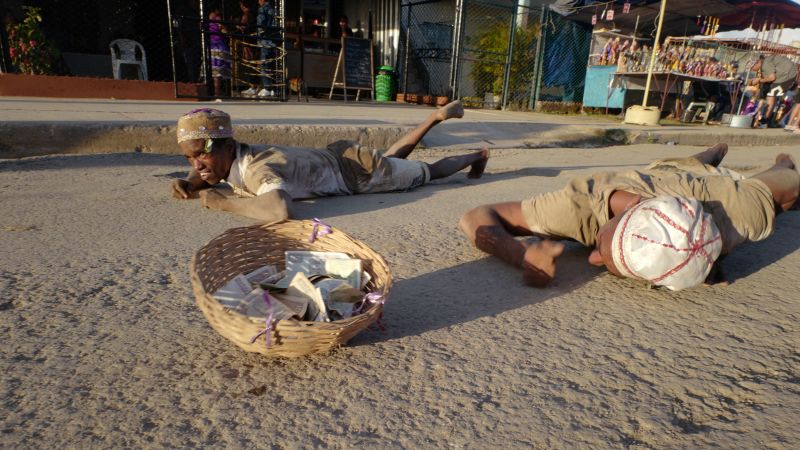The Pilgrimage of St. Lazarus in Havana, Cuba
The Pilgrimage of St. Lazarus is one of the largest and most colorful religious processions in Cuba, taking place every year in December. Thousands of Cubans walk barefoot for miles to the small church of El Rincón on the outskirts of Havana to show their devotion to the saint. The pilgrims crawl on their hands and knees, some with cinder blocks tied to their feet, to represent poverty and show their commitment to the saint.
According to the New Testament, Lazarus was resurrected by Jesus and became the patron saint of the poor and the sick. Many of the Cubans asking for a wish from the saint wear clothing made from rough cloth sacks to represent poverty. Others take their devotion to the extreme, crawling on their stomachs or facing backwards.
The pilgrimage is a display of religious belief in a country that has slowly become more open to religion since changing its constitution in 1992. The visit of Pope John Paul II in 1998 further helped restore rights for people of faith. However, a heavy police presence surrounds the pilgrimage, and officials have placed posters of former leaders outside the church.
The pilgrimage is also a display of the complex cultural heritage of Cuba, which has a strong tradition of Santería, an offshoot of the Yoruba religion brought to the island by African slaves. Santería has blended African deities with Catholic saints, and many believers have incorporated elements of both faiths into their practices.
The Catholic Church in Cuba does not recognize Santería, but has accepted its followers at certain ceremonies. However, the church has also made it clear that it does not promote or join with Santería. Many of the pilgrims voiced concern about the worsening economic situation in Cuba and expressed a wistfulness for the change in policy towards the communist-run government announced by then-President Barack Obama 10 years ago.
The pilgrimage is a testament to the power of faith in the face of adversity, and many of the pilgrims are hopeful that their devotion will bring them through the tough times ahead. As one pilgrim said, “To live, human beings need a reason. Something that gives them light and for me it’s my faith. If not, you die.”

